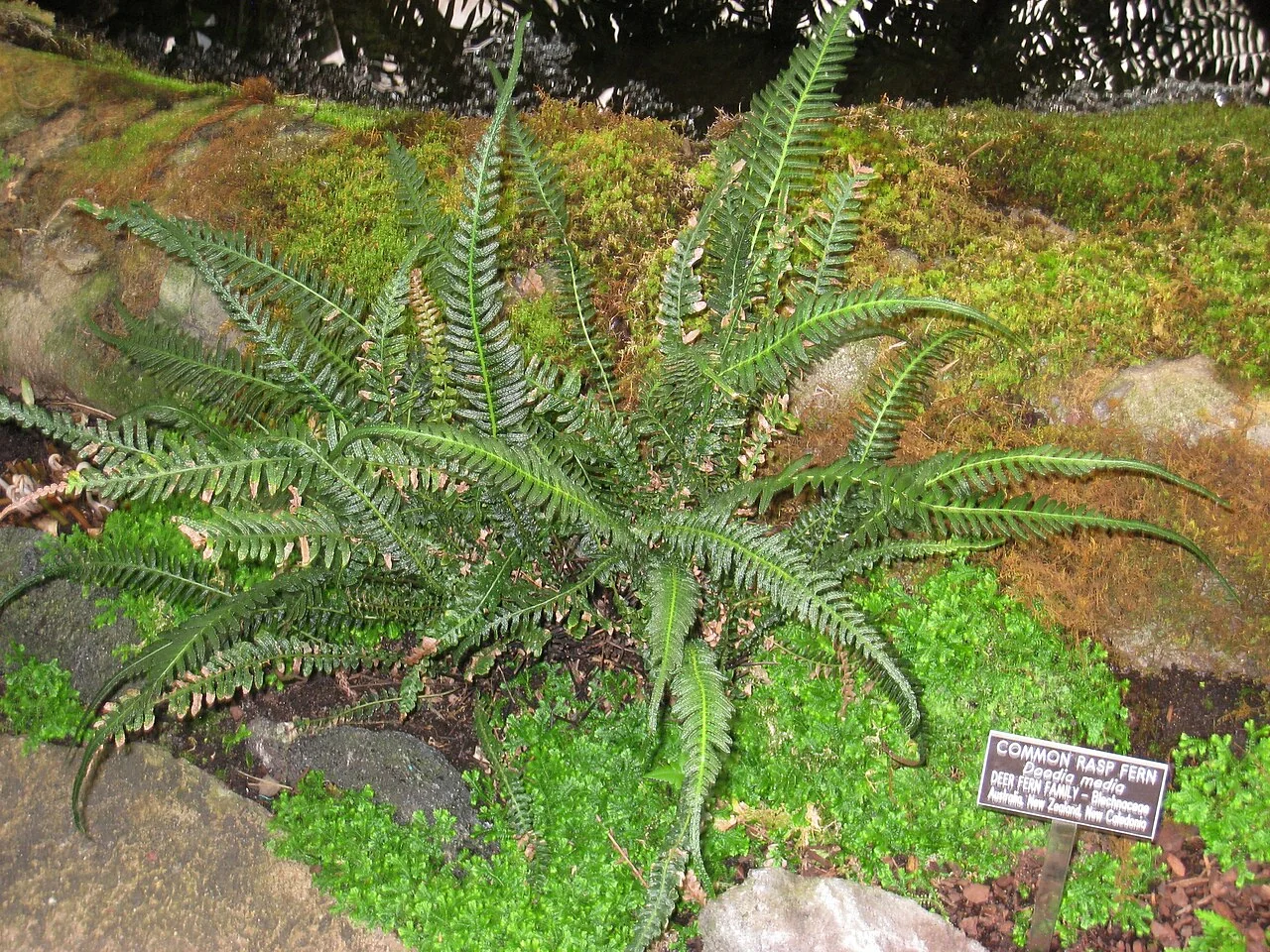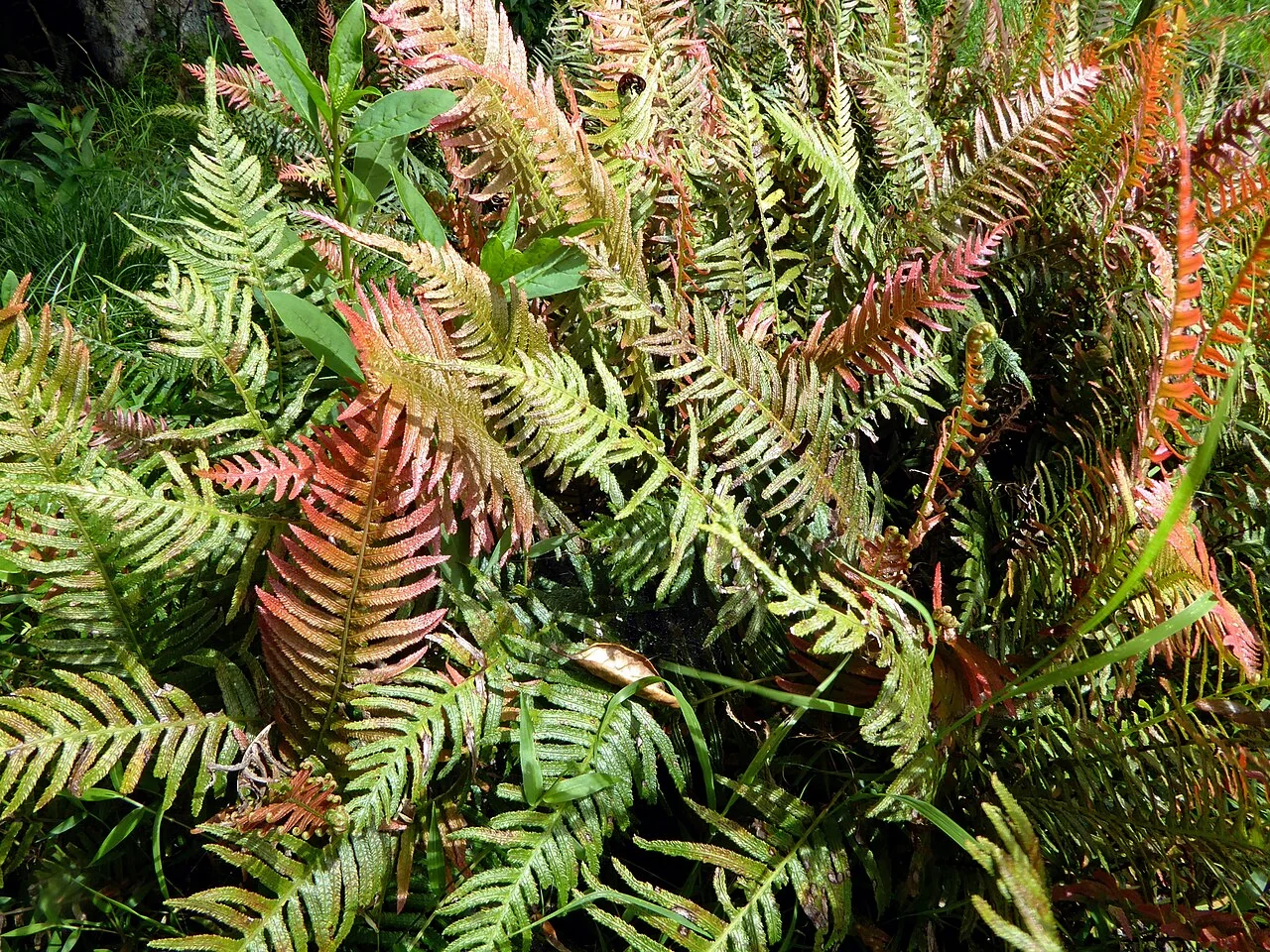
Common Rasp Fern
Doodia media
Common Rasp Fern ( Doodia media ) is a stunning native New Zealand fern renowned for its spectacular seasonal colour display. This hardy woodland fern produces brilliant red emerging fronds in spring that gradually mature to deep green, while the stems remain red throughout the year, creating a striking contrast. Also known by its Māori name "pukupuku", this adaptable fern thrives in shaded gardens and forms attractive spreading colonies. Perfect for woodland gardens and shaded borders , making it an excellent choice for New Zealand gardeners seeking low-maintenance native plants.

Plant Description
Doodia media (rasp fern) forms compact clumps; new fronds emerge pink-red, turning green with age. Leaflets are coarse-toothed, giving a -¬ "rasp-¬ texture.
Quick Facts
| Common Name | Common Rasp Fern |
|---|---|
| Scientific Name | Doodia Media |
| Māori Name | Pukupuku |
| Family | Blechnaceae |
| Height | 0.4 m (40cm) |
| Spread | 1.2 m wide, forming spreading colonies |
| Growth Rate | Moderate - full size in 5-10 years |
| Flowering | None - reproduces by spores |
| Climate | Temperate - suitable for Auckland, Tauranga, Hamilton, Wellington, Christchurch |
| Soil | Well-draining, organic-rich, moist |
| Sun Requirements | Partial to full shade |
| Maintenance | Low |
| Lifespan | Long-lived perennial fern (10+ years) |
| Salt Tolerance | Moderate - can handle some coastal exposure |
| Deer/Rabbit Resistant | Yes |
| Light | Partial to full shade |
| Water Needs | Moderate to high; evenly moist, well-drained soil |
| Frost Tolerance | Hardy with light frost tolerance; mulch in colder areas |
Climate Best Suited to
Mild, frost-free to light-frost climates; thrives in humid shade.
Regional Suitability
| City | Climate Suitability |
|---|---|
| Whangārei | Ideal |
| Auckland | Ideal |
| Hamilton | Ideal |
| Tauranga | Ideal |
| Rotorua | Ideal |
| Gisborne | Ideal |
| New Plymouth | Ideal |
| Napier | Ideal |
| Whanganui | Ideal |
| Palmerston North | Ideal |
| Wellington | Ideal |
| Nelson | Ideal |
| Christchurch | Ideal |
| Dunedin | Ideal |
| Invercargill | Ideal |
Natural Habitat
Shaded banks and forest margins in warmer districts, from lowland gullies to sheltered river terraces. It favours humus‑rich, evenly moist soils beneath light canopies, weaving between rocks and roots to form spreading colonies that stabilise leaf litter and create humid microclimates for other ferns.
Conservation Status
Current Threats and Protection
Common Rasp Fern ( Doodia media ) is classified as "Not Threatened" in New Zealand's threat classification system. This hardy native fern has a stable population across its natural range in the North Island and upper South Island, particularly in the Nelson and Marlborough regions.
The species shows good adaptability to various growing conditions and readily establishes in suitable habitats. In cultivation, it has proven to be a resilient garden plant that can naturalize in appropriate environments, often self-sowing from spores. This natural reproductive success contributes to its stable conservation status.
While not currently threatened, like all native ferns, Common Rasp Fern benefits from habitat protection and the preservation of native forest ecosystems where it naturally occurs. Gardeners can support conservation efforts by including this species in native plant gardens and allowing it to establish naturally in suitable woodland areas.
How to Grow
Cultivation Requirements
Thrives in bright shade with consistent moisture and humus‑rich, free‑draining soil. Protect from hot, drying winds and midday sun to prevent scorch. Mulch with fine bark or leaf litter to keep roots cool and mimic forest duff.
Planting Guide
Best Planting Practices
Plant in spring at original depth into loose, organic‑rich soil. Water to settle, then mulch lightly with leaf litter, keeping the crown clear. Group plants 30-45 cm apart for a continuous understory; provide shelter while establishing.
Ecology
Creates cool, humid micro‑habitats at ground level, sheltering invertebrates and aiding moisture retention under canopy. Spore dispersal allows gradual colonisation of suitable niches, helping bind soil on shaded banks and at the base of larger ferns.
Uses
Compact, colourful fern for edging shaded paths, softening the base of tree ferns, pocket planting among boulders and massing as a low groundcover. Excellent in containers and courtyard ferneries where red flushes provide seasonal interest.
Landscaping Ideas
Combine with Adiantum cunninghamii , Asplenium bulbiferum and shade‑tolerant Astelia for contrasting textures. Repeat small groups to create rhythm along shaded paths and to frame water features or damp rock pockets.
Seasonal Care
Summer
Keep soil evenly moist and humidity high through dry spells; shield from harsh afternoon sun and hot winds to prevent scorch. Hose off dust to keep fronds clean and photosynthesising well.
Pruning
Pruning Techniques
In late winter, remove tired fronds cleanly at the base to make room for the new red flush. Avoid cutting into the crown and take care not to damage emerging croziers when grooming during the season.
How to Grow Common Rasp Fern
Common Rasp Fern grows best when you match its natural habitat: prepare well-drained soil, get the light right, water steadily, and protect from extremes during establishment. Dig wide planting holes, set the crown at original depth, water to settle, and mulch with coarse organic matter to conserve moisture while keeping the stem base dry. Feed lightly in spring; heavy nitrogen is unnecessary and can weaken growth.
Seed
Sow fresh, viable seed on a free-draining mix, cover lightly with fine grit, and keep evenly moist in bright light out of harsh sun. Germination timing varies; prick out once roots hold the media and harden off gradually.
Division
Where the species permits, divide robust clumps in early spring as new growth begins. Replant divisions with several shoots into fresh mix, water thoroughly, and maintain steady moisture until re"established.
Cuttings
For shrubs and many perennials, strike semi-hardwood cuttings in late spring to summer in a coarse, free-draining propagation mix under gentle bottom heat and high humidity. Reduce leaf area, ventilate progressively as roots develop, and pot on before planting out.
Aftercare
Maintain an open mulch, irrigate during drought in the first season, and prune or tidy according to the species to build a resilient framework. Adjust shade, wind exposure and watering to prevent stress, and refresh mulch annually for long-term performance.
Pests and Diseases
Common Problems and Solutions
Generally trouble‑free. In dry, enclosed sites, scale and mealybug may settle-wash with a mild soap spray and improve airflow. Slugs and snails chew unfurling fronds; use cultural controls. Crown rot develops if soil remains saturated in winter.
Cultural Significance
Traditional Uses and Values
Known to Māori as "pukupuku", Common Rasp Fern holds cultural significance as part of New Zealand's indigenous flora. The name "pukupuku" reflects the Māori tradition of closely observing and naming native plants based on their distinctive characteristics.
Like many native ferns, Doodia media was part of the traditional Māori understanding of forest ecosystems. Native ferns were important indicators of forest health and suitable growing conditions for other culturally significant plants. The distinctive red coloration of emerging fronds would have made this species particularly recognizable to early inhabitants.
In contemporary New Zealand culture, Common Rasp Fern represents the country's unique botanical heritage and is valued in native plant gardening. Its striking seasonal colour changes and hardy nature make it a popular choice for those seeking to incorporate authentic New Zealand flora into their landscapes, connecting modern gardens with the country's natural heritage.
Bonus Tip
Expert Growing Advice
Use collected rainwater and a thin leaf‑litter mulch to keep foliage pristine; both minimise mineral spotting and maintain the cool, even moisture this fern prefers.







